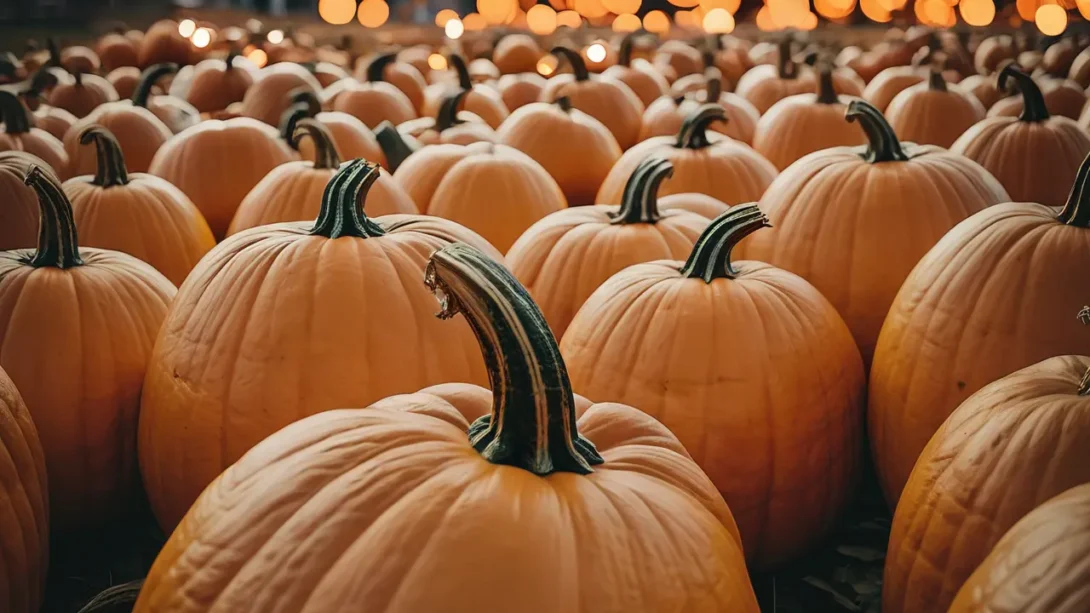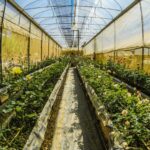Growing pumpkins in Alabama can be a rewarding endeavor, offering the chance to harvest vibrant, plump pumpkins just in time for the autumn season. However, the key to a successful pumpkin patch lies in the timing of your planting. This guide will delve into the best practices for planting pumpkins in the diverse climate zones of Alabama, ensuring your gardening efforts flourish.
Alabama’s Climate
Alabama’s climate is characterized by its diversity, ranging from the cooler Appalachian regions in the north to the warmer, humid conditions of the southern coastal plains. This variation in climate zones significantly impacts the optimal planting times for pumpkins across the state.
The majority of Alabama experiences a long, hot summer and a mild winter, which can provide an extended growing season for pumpkins. However, it’s crucial to plant at a time that allows pumpkins to mature before the first frost of winter, ensuring a healthy and timely harvest.
Selecting the Right Pumpkin Variety
Choosing the right variety of pumpkin is essential for success in Alabama’s varied climate. Pumpkins come in many shapes, sizes, and colors, and selecting a variety that thrives in Alabama’s conditions will increase your chances of a bountiful harvest.
Large Varieties
For those looking to grow large carving pumpkins or giant pumpkins for competitions, varieties like ‘Dill’s Atlantic Giant’ or ‘Big Max’ are popular choices. These varieties require a longer growing season and more space, making early planting essential.
Small and Pie Varieties
For smaller gardens or those interested in culinary pumpkins, varieties like ‘Small Sugar’ or ‘New England Pie’ are ideal. These pumpkins typically mature faster and can be planted a bit later in the season. They are also well-suited for Alabama’s climate, offering delicious results for fall recipes.
Optimal Planting Times
Timing is crucial when planting pumpkins in Alabama, as you need to allow enough time for your pumpkins to mature fully before the first frost. In Alabama, the first frost dates can vary significantly from north to south, affecting when you should plant your pumpkin seeds.
Ideal Planting Dates by Alabama Region
- Northern Alabama: In the cooler northern regions, it’s best to plant pumpkins by late May to early June. This ensures that pumpkins have enough time to mature before the first frost, typically in late October.
- Central Alabama: For those in central Alabama, planting can occur a bit later, from early to mid-June. The slightly warmer climate extends the growing season a bit longer than in the north.
- Southern Alabama: In the warm southern regions, gardeners have a larger window for planting, ranging from mid-June to early July. The warm climate and later frost dates provide a longer growing season.
How Weather Patterns Affect Planting Schedules
Alabama’s weather can be unpredictable, with variations in rainfall and temperature. Monitor the local weather forecast and be prepared to adjust your planting schedule accordingly. A late spring frost or an unusually cool summer can delay planting, while an early warm spell may allow for earlier planting.
Preparing Your Garden for Pumpkins
Before planting your pumpkin seeds, taking the time to prepare your garden can significantly impact the success of your harvest.
Soil Preparation and Requirements
Pumpkins thrive in well-drained, nutrient-rich soil with a pH between 6.0 and 6.8. Consider conducting a soil test and amending your soil with compost or aged manure to improve its fertility and structure. Pumpkins are heavy feeders, so enriching your soil will support their growth throughout the season.
Sunlight and Spacing Considerations
Choose a planting site that receives full sunlight for at least 6-8 hours a day, as pumpkins require plenty of sunlight to grow. Additionally, pumpkins need a lot of space to spread out. Space your hills or rows at least 4-6 feet apart, with 6-8 feet between rows, to give your pumpkins ample room to expand.
Planting and Care Instructions
Once your garden is prepared, and you’ve chosen the optimal time for planting, follow these steps to plant your pumpkin seeds for the best chance of success.
Step-by-Step Guide to Planting Pumpkin Seeds
- Create Mounds: Form small mounds of soil about 2-3 feet in diameter and 8 inches high. This improves drainage and warms the soil faster, encouraging germination.
- Sow Seeds: Plant 4-6 pumpkin seeds per mound, pushing them 1 inch deep into the soil. This ensures that at least a few seeds will germinate in each spot.
- Water Generously: After planting, water the seeds thoroughly. Pumpkins require a lot of water, but it’s crucial to keep the leaves dry to prevent mildew.
- Thin Seedlings: Once the seedlings sprout and have a few true leaves, thin them to 2-3 per mound, keeping the strongest plants.
Tips for Watering, Fertilizing, and Pest Control
- Watering: Provide 1-2 inches of water per week, depending on weather conditions. Drip irrigation or soaker hoses are ideal for keeping water off the leaves and directly in the soil.
- Fertilizing: Apply a balanced fertilizer when planting and side-dress with a high-nitrogen fertilizer once vines begin to grow. Switch to a phosphorus-rich fertilizer once flowers appear.
- Pest Control: Regularly inspect plants for signs of pests and diseases. Use organic pesticides or fungicides if necessary, and remove any infected plants promptly to prevent spread.
Monitoring and Adjusting
Signs Your Pumpkins are Thriving
Look for healthy, deep green leaves, steady growth of vines, and the development of flowers followed by fruit. These are all signs that your pumpkins are on the right track.
Adjusting Care Based on Weather and Growth
Be prepared to adjust your care regimen based on the current weather conditions and the growth stage of your pumpkins. For example, increase water during hot, dry periods, and reduce it if you’re experiencing a lot of rain.
Harvesting and Enjoying Your Pumpkins
How to Know When Your Pumpkins are Ready to Harvest
Pumpkins are ready to harvest when they have reached their expected color and the rind is hard. The vines will start to die back, and the stem will become corky. Harvest before the first heavy frost, using a sharp knife to cut the stem, leaving several inches attached to the pumpkin.
Ideas for Using Your Homegrown Pumpkins
Your homegrown pumpkins can be used for carving, decoration, or cooking. Smaller, sweet varieties are excellent for pies, soups, and other dishes. Remember to save some seeds for roasting, or for planting next year’s crop.
By following these detailed steps for planting, caring for, and harvesting pumpkins in Alabama, you’ll enjoy the fruits of your labor in the form of beautiful, delicious pumpkins. Whether you’re carving a jack-o’-lantern or baking a homemade pie, the satisfaction of growing your own pumpkins is unmatched.



